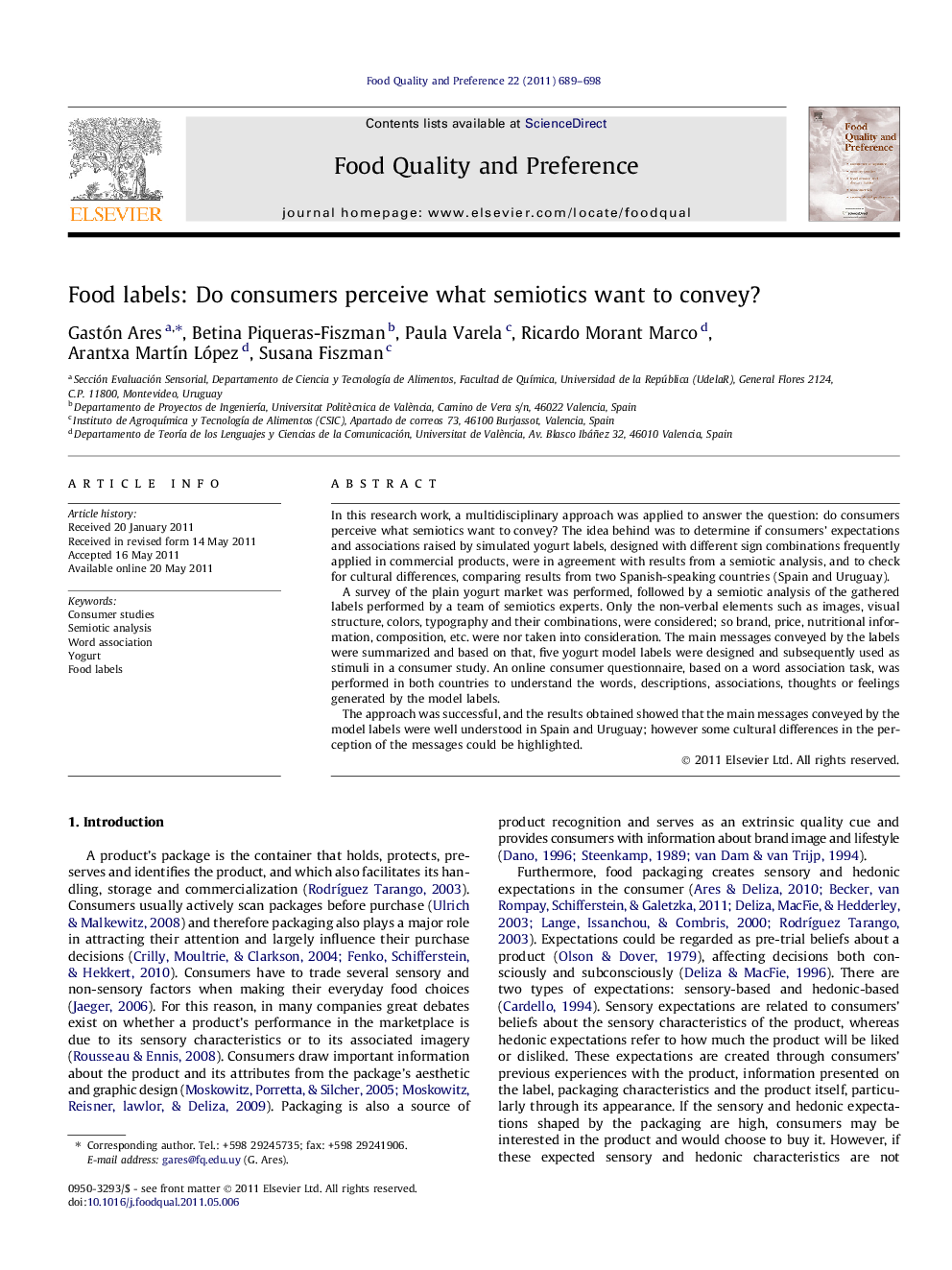| Article ID | Journal | Published Year | Pages | File Type |
|---|---|---|---|---|
| 4317591 | Food Quality and Preference | 2011 | 10 Pages |
In this research work, a multidisciplinary approach was applied to answer the question: do consumers perceive what semiotics want to convey? The idea behind was to determine if consumers’ expectations and associations raised by simulated yogurt labels, designed with different sign combinations frequently applied in commercial products, were in agreement with results from a semiotic analysis, and to check for cultural differences, comparing results from two Spanish-speaking countries (Spain and Uruguay).A survey of the plain yogurt market was performed, followed by a semiotic analysis of the gathered labels performed by a team of semiotics experts. Only the non-verbal elements such as images, visual structure, colors, typography and their combinations, were considered; so brand, price, nutritional information, composition, etc. were nor taken into consideration. The main messages conveyed by the labels were summarized and based on that, five yogurt model labels were designed and subsequently used as stimuli in a consumer study. An online consumer questionnaire, based on a word association task, was performed in both countries to understand the words, descriptions, associations, thoughts or feelings generated by the model labels.The approach was successful, and the results obtained showed that the main messages conveyed by the model labels were well understood in Spain and Uruguay; however some cultural differences in the perception of the messages could be highlighted.
► Semiotic analysis of yogurt labels was used to investigate consumers’ associations and expectations. ► The approach proved that the main messages conveyed by the model labels were understood by consumers. ► Overall perception of the yogurt labels was very similar in Spain and Uruguay.
